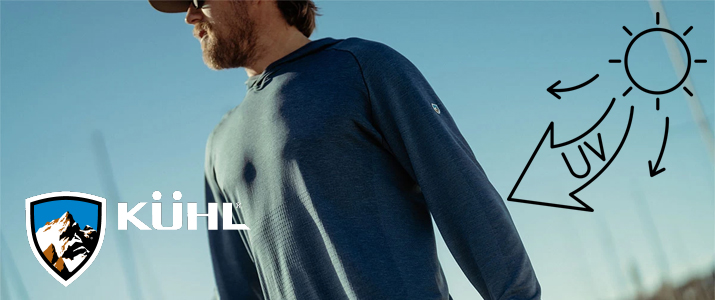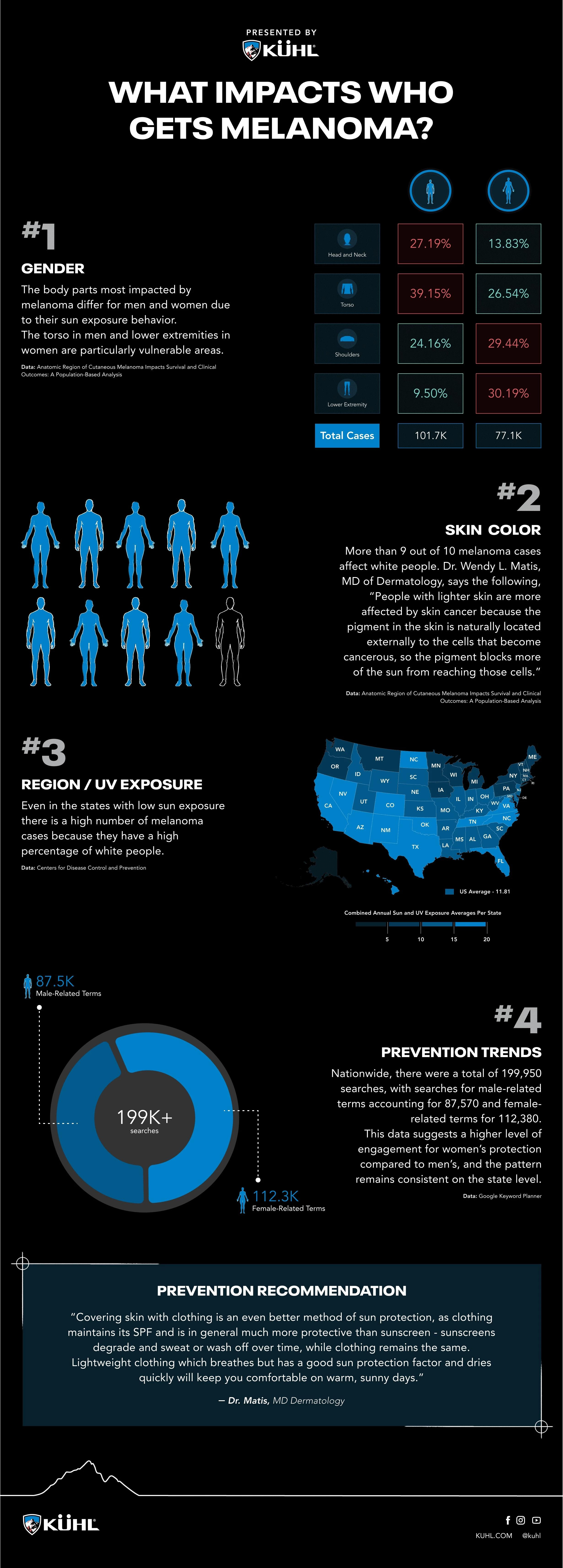As we plunge into the hottest months, gearing up for more outdoor adventures, let’s prioritize a crucial yet often overlooked aspect of summer prep—skin health. The American Cancer Society projects over 100,000 Americans will face invasive melanoma in 2024, with around 59,000 men and 41,000 women affected. Tragically, about 5,000 men and 2,800 women will die from it.
But how many of us truly prioritize sun protection? What causes the gender gap in melanoma diagnoses, and why are death rates higher in men? Are differences in preventive behaviors a key factor in this disparity?
Our friends at KÜHL just released a great article, ‘Why More Men Die from Melanoma and Why They Don’t Have To,’ answering many of these questions.
Key Findings
- 36.48% more men than women in the US had melanoma diagnosed, and the mortality rate from melanoma among men was 61.74% higher compared to women. This shows that men are more impacted by skin cancer.
- There are 25.16% fewer Google searches for men-related sun protection terms than women-related terms. This indicates that men have a lower interest in skin cancer prevention, which may contribute to higher rates of melanoma diagnosis and melanoma mortalities.
- The body parts most impacted by melanoma differ for both men and women, indicating that clothing choices significantly influence melanoma risk. The torso in men and lower extremities in women are particularly vulnerable areas, highlighting the need for targeted protection.
Stay Safe and Take Action to Protect Yourself
- Seek Shade: Staying in the shade is one of the easiest ways to reduce UV exposure.
- Protective Clothing: Wear long-sleeved shirts, long pants, or leggings to cover the skin. Opt for light, tightly woven fabrics for better protection. Look for clothes with a UV protection factor (UPF) label, indicating the level of UV protection provided. A hat with a broad brim offers additional protection for the face, ears, and neck.
- Sunscreen: Slap on a broad-spectrum sunscreen with an SPF of 30 or higher. Apply generously and reapply every 2 hours, especially after swimming or sweating.
- Peak UV Hours: Avoid the sun between 10 AM and 4 PM when UV rays are strongest.
- Environment Factors: Be extra cautious near reflective surfaces like office windows or water, sand, and snow which intensify UV exposure.
- Sunglasses: Wear sunglasses that block 99% to 100% of UVA and UVB rays.
- Avoid Tanning Beds: Tanning beds and sun lamps emit harmful UVA and UVB rays and are linked to an increased risk of skin cancer.


